.gif)

Historic Roads in the National Park System
MENU
Understanding and Managing Historic Park Roads
|
Historic Roads in the National Park System
|

|
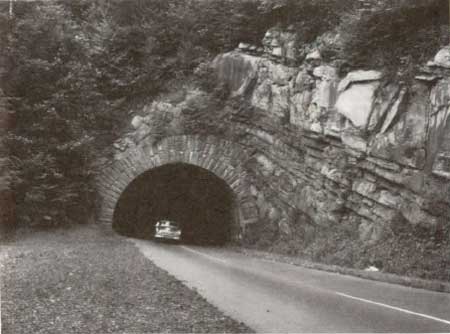
|
| Fig. 32. Tunnesl allowed access through terrain that otherwise might be insurmountable. The expertise in tunnel construction had evolved out of the railroads. Portals on tunnels varied from the natural bedrock to the rustic stonework shown here on the South Portal, Great Smoky Mountains National Park. (National Archives, Record Group 30) |
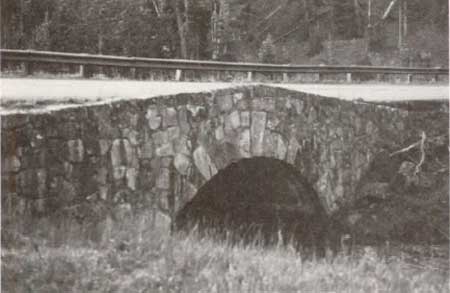
|
| Fig. 33. Bridges and culverts were designed to fit into the surrounding landscape. At Cub Creek in Yellowstone, the rubble stone masonry had characteristics that blended it with the surrounding environment. These included the shapes of the stones, width and depth of the mortar joints, weathered surfaces toward the outside, use of onsite materials, and larger stones toward the base. (NPS photo by Laura E. Soulli&eacaute;re) |
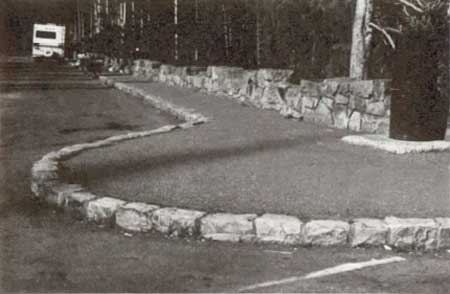
|
| Fig. 34. This type no. 3 guardrail with the corresponding stone curb provided a clear definition between vehicular, pedestrian, and forest space. This type of development protected some of the fragile natural resources while encouraging visitors to park, get out of their cars, and seek out the highlighted features, in this instance Gibbon Falls overlook at Yellowstone National Park. (NPS photo by Laura E. Soulli&eacaute;re) |
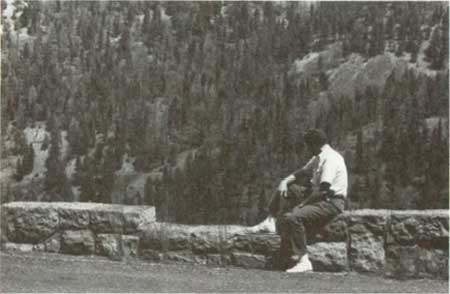
|
| Fig. 35. Historic stone guardrails along park roads are an easily identifiable significant element of the road, but the wall height, relative strength of its materials when crash-tested, and jagged edges do not meet modern safety requirements. (NPS photo by Laura E. Soulli&eacaute;re) |
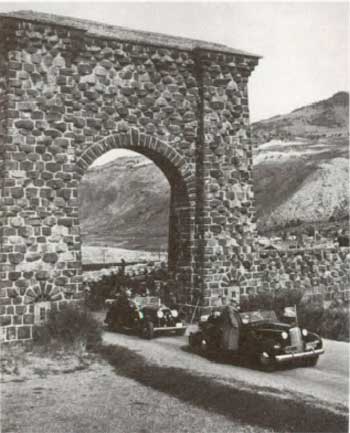
|
| Fig. 36. Historic roads into national parks usually had some type of architectural feature proclaiming "boundary." The army constructed the Gardiner Entrance Arch at Yellowstone's north entrancde. Here President Roosevelt and his entourage entered the park on September 25, 1937. (National Archives, Record Group 79) |
NEXT >>>
Last Modified: Mon, Aug 23 2004 10:00:00 pm PDT
http://www.cr.nps.gov/history/online_books/harrison2/shsi3.htm
![]()
 Top
Top